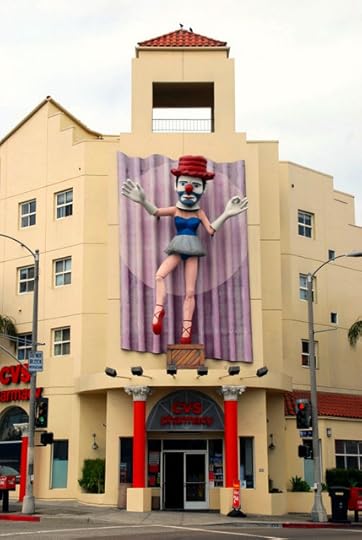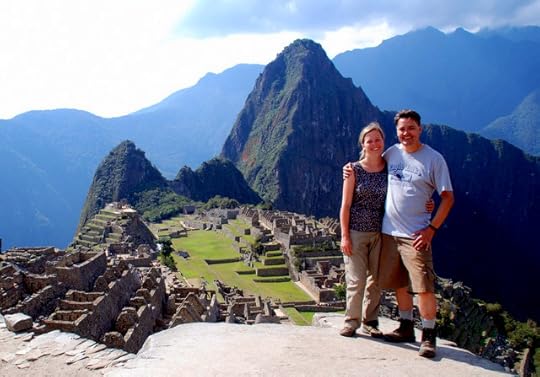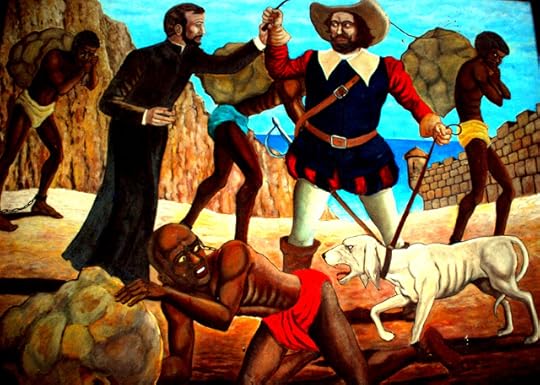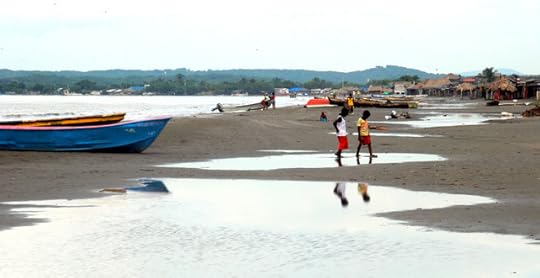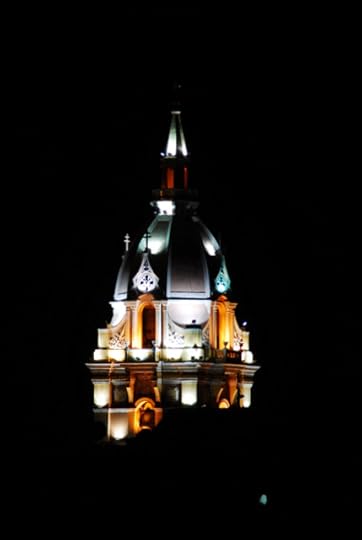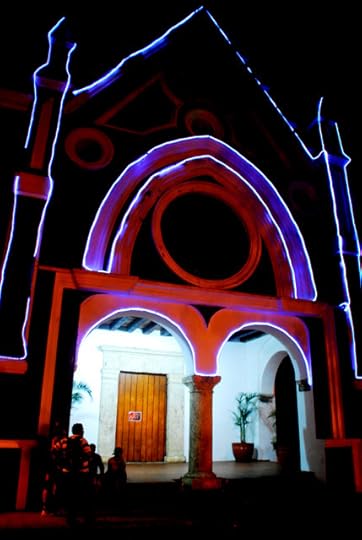Roderick Phillips's Blog, page 19
January 23, 2014
Los Angeles, Days 179-182
Christi and I arrived in Los Angeles yesterday afternoon. We were met at the airport by Christi’s mother and step-father and a lot of hugging. Christi’s mother (her shoulder healing well after the recent fracture) flung her arms around Christi and would not let go. I think her family are just pleased that nothing scary happened. And if you’ve read all my blog posts you’ll know that neither Christi nor I ever intentionally put ourselves in dangerous situations.
We’re trying to keep our brief layover in Los Angeles reasonably quiet because first we’re absolutely knackered. I think adrenaline kicked in on day 1 and kept us going the entire 6 months. Now that we’re home (albeit briefly) the adrenaline levels are already subsiding and I expect exhaustion to set in at any moment. This could be a problem because we didn’t return to Los Angeles primarily to rest, but to complete a host of chores, including unpacking and repacking our bags (we won’t be seeing too many glaciers in Africa so its out with the warm-weather clothing). We will also be camping initially so we’ll need sleeping bags / mat (the tent itself is provided by the tour company – more about that when we get to Africa). And we will be going on several safaris so I’m going to lug the big lens around with me this time. Los Angeles finally affords me the opportunity to get my camera some professional TLC so that it will be in tip-top shape for Africa.
Perhaps the most important task is updating our passports. Christi’s is still valid but has run out of pages, while mine will expire before the end of our Year of Wonder. And as we only have a few days in Los Angeles, we will have to beg and cajole the authorities to do the work much quicker than usual. This will be quite risky because government agencies never seem to do anything quickly.
And in between all that I still want to immerse myself in a little Los Angeles culture for a few days. After all who could visit Los Angeles and not want to spend some time in Venice, Santa Monica, Hollywood, and the Getty Center.
As you can see our time in Los Angeles is going to be a nice little break from our hectic traveling schedule…
See ya in Africa.
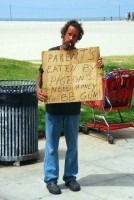
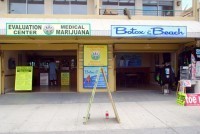
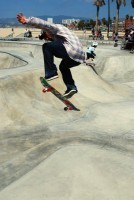
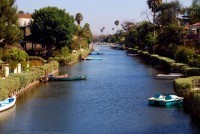
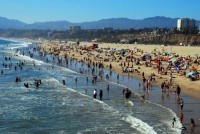
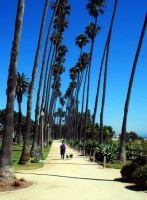


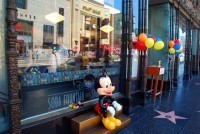
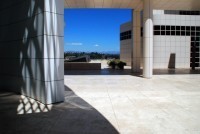

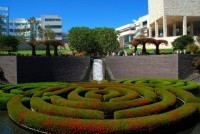
Blog post by Roderick Phillips, author of Weary Heart – a gut-wrenching, heart-breaking tale of love and test tubes
The post Los Angeles, Days 179-182 appeared first on Roderick Phillips.
January 22, 2014
South America redux, Day 178
Christi and I leave Bogota in the middle of the night, having completed a phenomenal 6-month loop through South America. And for those readers who have been with us from the beginning, I think you’ll agree we maintained an incredible pace. We certainly could not have done more. If I had to pick a highlight from each country, I think I’d start with our visit to the Galapagos Islands in Ecuador. For wildlife and photography enthusiasts it doesn’t get much better than this. In Peru, it has to be the Inca trail to Machu Picchu, although I have no desire to clamber over Dead Woman’s Pass again. For a small country Bolivia has an incredible variety of people and eco-systems. Lake Titicaca was great as was Noel Kempff Mercado National Park, but the desert south of Uyuni probably wins by a short head for me. Chile is much easier: the cruise through Tierra del Fuego, culminating in a visit to Cape Horn. Truly memorable. Argentina, on the other hand, is just amazing from the deserts to the glaciers to the jungle and the mountains, not to mention the waterfalls, people, and wildlife. There is reason we spent so long in Argentina. This country is unmissable and choosing just one thing is virtually impossible. Whatever I chose today, I’m sure I’ll change my mind tomorrow, but…I think… Iguazu Falls (I feel bad already). Despite the mixed weather we had in Brazil I’m still going to go with the beaches of Rio. I mean, come on, those images are burned in my mind forever. The trek to Roraima wins hands down as my highlight from Venezuela, while in Colombia I’d have to say the friendliness of the people and beyond that the languid vibe of Cartagena.
All these thoughts rumble and tumble through my mind as we rumble and tumble over a stormy Caribbean sea. Fortunately, the Gods are with us (as they have been the whole trip) and we land safely in Houston. Passport control is a breeze this time (not always the case for a Green Card holder like myself who enjoys foreign travel) and then we have to collect our bags and re-check them in again for our domestic connection to Los Angeles. Then it’s a 4-hour wait, which is enough time to hear the same Fox News broadcast three times over. For the first time in 6 months we actually understand everything that is going on around us, including the background chatter, yet we feel so out-of-place. No one knows that we have just completed a 6-month adventure in South America and neither do they realize that we are only passing through America on our way to another 6-month adventure in Africa. We are surrounded by familiar things that seem so mundane and unimportant. I’m glad we will not stay in America long because I already feel the societal pressure to conform. And that is what Christi and I wanted to escape from in the first place. We wanted to be free, but now the chains tieing American society and culture together are beginning to rattle.
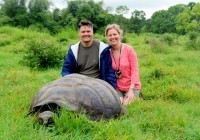
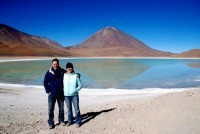

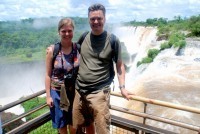
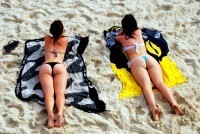
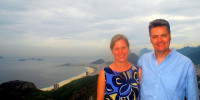
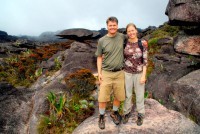
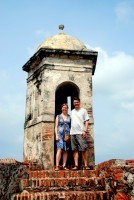
Blog post by Roderick Phillips, author of Weary Heart – a gut-wrenching, heart-breaking tale of love and test tubes.
The post South America redux, Day 178 appeared first on Roderick Phillips.
January 21, 2014
Cosmopolitan Cartagena, Day 177
Our last day in Colombia is a series of odd experiences. Christi and I enjoy a late breakfast at the Casa Quero and then head out on to the cosmopolitan streets of Cartagena to soak up the sounds, the culture, the people, and architecture of this city at the very top of South America.
We’re strolling along quite happily gazing at the abundant sculptures on display when we’re stopped by three teenage girls from Medellin. “Are you from America?” one of them asks. Christi admits that she is from Los Angeles, while I tell them I am from Britain. Apparently being British is of no significance whatsoever, but the girls are very excited to talk to cosmopolitan Christi and have their photo taken with her. My role is limited to taking the damn photo. Seriously, aren’t I the interesting, sophisticated, and mysterious one?
I’m still grumbling as we turn the corner and stumble into a photo shoot. The model is of Amazonian proportions, tall enough in fact to pick a piece of fruit right out of the bowl the Carib fruit seller is balancing on her head. Judging by the silhouette the Amazonian is modeling, Christi thinks the company is probably Chico’s Women’s clothing. Being a bit of an amateur photographer myself, I’m offer a few suggestions to make the shoot even more successful ( interesting, sophisticated, mysterious, and artistic!), but the Chico’s team decide to go in a different creative direction. Their loss!
Christi thinks I need a cool, refreshing drink to calm me down and so we grab a table at an outdoor cafe in parque Fernandez Madrid. Christi goes for a Cosmopolitan cocktail, while I drink fresh OJ. And then another odd thing happens – a group (mostly girls) dressed in slinky Santa Claus costumes appear offering us free candy. (Quite why the girls are dressed as Santa Claus is January is unclear to me). The candy samples on offer are not nearly as appealing as the eye candy handing it out, though. ( interesting, sophisticated, mysterious, artistic and witty!)
On our way back to the hotel Casa Quero we are offered cocaine for the first time since arriving in Colombia. ’It will help you remember the 80′s!’ the guy exclaimed. We decline graciously. And finally on this day of odd experiences, our hotel’s pet toucan, Poco, has escaped its cage and rather than make a bid for freedom he decides to take a bite out of Christi. Now that is clever.
During our time in Colombia the weather has been variable – second only to Brazil in terms of the rain we have endured. I mention this because as we taxi to the airport a thunderstorm rolls in from the Caribbean. Our flight to Bogota for our 1 am international connection is delayed by two hours, finally departing at 9:30 pm. Luckily the flight (which is tremendously bumpy) is only 1 hour, but then we sit on the tarmac at Bogota airport for 20 mins waiting for a gate to open up. It takes another 30 minutes to deplane and collect our bags from the luggage carousel. We then learn that our Avianca flight arrived at the domestic terminal, but our TACA flight to Los Angeles departs, not surprisingly, from the international terminal and the courtesy shuttle does not leave until 11.45 pm. More by luck than judgment we find TACA airlines service desk and attempt to check-in. This we cannot do until we obtain paperwork that confirms we don’t need to pay departure tax ( so dumb) and then we have to answer a host of security questions before we can finally check-in (it’s now midnight). Next it’s a dash to the departure gate, negotiating two immigration control points and two security checks on our carry-on luggage (x-ray followed by a hand-check). We reach the gate just as the last passengers are boarding and are relieved to collapse into our seats. That is not quite the end of it, however, as TACA forgot to submit a flight plan so Air Traffic Control can’t release us. Heated exchanges from the cock pit and a thirty minute delay, before we finally escape Colombia and South America after 6 glorious months and some wonderful memories.
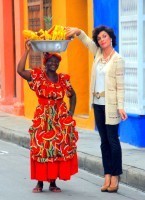
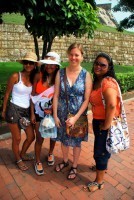
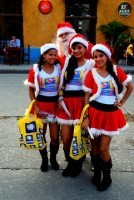

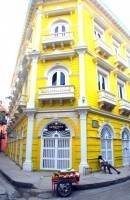
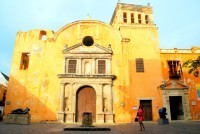

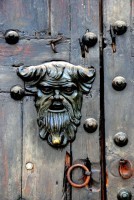
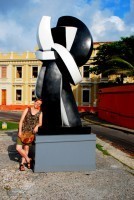
Blog post by Roderick Phillips, author of Weary Heart – a gut-wrenching, heart-breaking tale of love and test tubes.
The post Cosmopolitan Cartagena, Day 177 appeared first on Roderick Phillips.
January 20, 2014
Convento y Iglesia San Pedro Claver, Day 176
Christi and I are going to church today to seek guidance for our relationship woes (Christi had so much fun exploring Cartagena yesterday without me she suggested we do it again). I think experimenting within a relationship is okay as long as no one gets hurt. It’s not me I’m worried about, obviously, but Christi could do with a little dose of guilt that the Catholic faith is so famous for instilling in its believers (and Christi is Catholic after all).
We begin our day at the Convento y Iglesia San Pedro Claver. Claver, a 16th century monk, devoted more than 40 years of his life ministering to slaves brought to Cartagena from Africa. And the slaves arrived at a prodigious rate – over 10,000 per year (although the conditions in transit were so foul and odious that one-third of them died along the way and were literally tossed overboard). The slave trade was undoubtedly cruel and the ocean voyages very dangerous, but the slave runners were able to sell their cargo for 50 times what they paid for them in West Africa. Born in 1581, San Pedro Claver worked tirelessly for the health and welfare of African slaves until his death in 1654. He was canonized in 1888 by Pope Leo XIII and is now the patron saint of slaves. One would hope, however, that in this modern era he isn’t called upon that often to save distressed souls.
The convent / church is a grandiose three-story building surrounding a tree (and bug)-filled courtyard, which also features Afro-Haitan artifacts such as masks, paintings, statues – and a few gnarly looking parrots. Beyond some more conventional statues and stained glass windows is a narrow stairway to a choir loft with magnificent views of the nave and the high altar. Beneath the high altar (but in full view) lie the remains of San Pedro Claver himself, which is a little ghoulish.
As this is our last full night in South America we are truly living it up and going out for dinner at another fancy restaurant. Indeed, Cartagena has fancy restaurants aplenty, just not so many patrons. Tonight we eat at the very fancy El Santisimo (The Blessed), which offers a fusion of French and Caribbean cuisine. I nibble daintily on fried red snapper, grilled chicken with mushrooms, and chocolate mousse, while Christi’s palate is tickled by fish carpaccio with avocado, tender beef stew with coconut rice, and a mango mousse. And since this is fine dining, one does not say de-licious. But it was, so there!
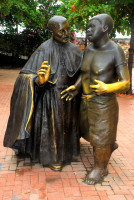
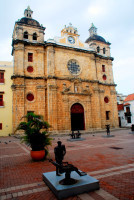
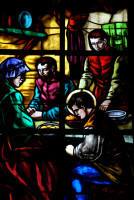
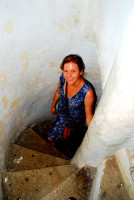
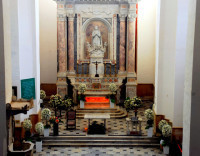
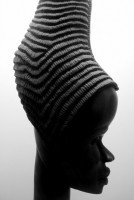
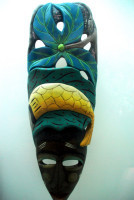
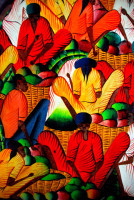

Blog post by Roderick Phillips, author of Weary Heart, a gut-wrenching, heartbreaking tale of love and test tubes.
The post Convento y Iglesia San Pedro Claver, Day 176 appeared first on Roderick Phillips.
January 19, 2014
La Boquilla, Colombia, Day 175
After 175 days on the road, Christi and I have decided to split up. It was a tough decision to take, but there was simply not enough time to see the Cartagena museum of Modern Art, the Cartagena Gold Museum, and La Boquilla in the same day. We’ve agreed to stay together for the sake of visiting La Boquilla this morning, but the truth is I’ve been seduced by the enticing, exquisite beauty of the Gold Museum; something that Christi is having a tough time understanding, so she is seeking solace in the arms of the Modern Art Museum. We hope, dear reader, that you will respect our privacy at this difficult time.
There are few scenic delights close enough to Cartagena that they can be visited as a day trip. We thought about going further afield to visit Santa Marta and perhaps hike Colombia’s version of the Inca Trail, which is called Ciudad Perdida (Lost City). Apparently the ruins are not as majestic as Machu Picchu so the appeal or the marketing is on the multi-day hike through the jungle rather than destination. But when Christi learns that the ruins are finally accessed by 1200 steep steps through dense jungle, she throws a tantrum and warns our split will be a lot longer than an afternoon if I raise the subject again. To be honest the thought of exchanging a comfy bed in Cartagena for a mosquito-infested tent in the jungle is not that appealing, which is why we end up taking the short taxi-ride to La Boquilla instead.
Our Lonely Planet guidebook insists La Boquilla is an attractive, sleepy fishing village 7 km north of Cartagena. However, our taxi is attacked by a group of itinerant youths upon our arrival. Our driver plows through the crowd without slowing down, although not fast enough to stop one youth from attaching himself to the car and holding on for dear life. Our driver screams blue murder (or poner el grito en el cielo as they say around here) at the attached offender. We learn later that these youths are self-styled gatekeepers and tour guides. They insist you pay a fee to enter La Boquilla (which our taxi driver clearly ignored) and also that you hire one of them to show you the highlights of the town. Our unscheduled passenger/guide is dragged along for 100 yards or so before tumbling to the ground, creating a mini sand storm. We don’t hire him.
I expected La Boquilla to be a Trindade-like tropical wonderland. Alas it’s gray, dull, and lifeless. Languid restaurateurs barely take an interest as Christi and I walk past. A few locals are frolicking in the waves, but there are no other western tourists in sight, which is rather suspicious. As Christi and I stroll along the beach another wave of ’tour guides’ badger us about a boat ride through some ‘beautiful mangroves,’ but it seems unlikely that anything around here could be described as beautiful. Indeed this part of the Caribbean sea is not at all romantic. The aggressive youths eventually lose interest in us, thank god, leaving Christi and I to wander the beach alone. It’s a truly uninspiring experience. Even the thatched-hut restaurants are all closed and a week’s worth of rubbish is festering by these shacks so there’s not much prospect of (or desire for) lunch. One block back from the beach is even worse: it’s a virtual slum. I’ll bet the cruise ship passengers from Cartagena don’t visit La Boquilla – and who could blame them. The only time our excitement level rises is when we board the local Vehitrans bus back to Cartagena. The bus is pretty beat up, but then so is La Boquilla.
Before Christi and I go our separate ways we enjoy a relaxing lunch at our favorite restaurant, the Zebra Cafe in San Diego plaza. Thereafter Christi goes one way and Igo another. And we agree that whatever happens in Cartagena this afternoon stays in Cartagena. The museum of gold is a smaller version of Bogota’s Museo del Oro and focuses solely on the Zenu people and not only has gold icons on display, but finery, alloys, and pottery. The museum also retells the Zenu penchant for taming the annual floods that beset their lands. Using a series of terraces and canals, the Zenu were able to direct the flood water, controlling its movement and preventing their villages from being inundated. This process also supported fishing and the provision of fresh nutrients when the floodwaters subsided. Not only were the Zenu smart they were very eco-friendly.
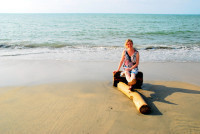
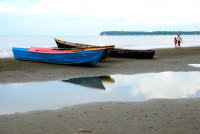
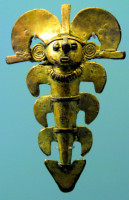
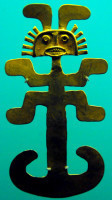
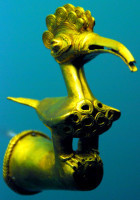
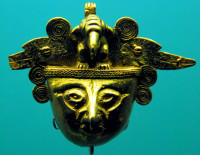
Blog post by Roderick Phillips, author of Weary Heart – a gut-wrenching, heart-breaking tale of love and test tubes.
The post La Boquilla, Colombia, Day 175 appeared first on Roderick Phillips.
January 18, 2014
La Popa, Cartagena, Day 174
For the first time since we arrived in Cartagena the Old Town is suddenly awash with tourists. The reason? A massive cruise liner is in the harbor. And the mothership has disgorged its bizarrely desirable plague of locusts on the town. A feeding frenzy ensues as the wealthy passsengers have only an hour or two to soak up the atmosphere, eat, buy souvenirs, while the locals only have a limited time to fleece the tourists. We want to avoid this plague for several reasons, including the fact that everything now costs twice what it did yesterday and it’s hard to get an authentic experience when you are surrounded by so many gray-haired, lily-white bodies! Unfortunately we appear to be following the same itinerary today. Our first collision is at La Popa, a convent atop a hill to the east of the Old Town called, predictably, Cerro Popa. La Popa offers grand views overlooking Old and New Cartagena. We arrive to an empty parking lot, although there are plenty of hawkers about (this should have been our first sign). Before we even enter the convent Christi is distracted by a hawker and his pet three-toed sloth. Christi is in ecstasy as the docile, friendly mother latches onto her. Christi is in love. After this experience, she wanders around the convent in a daze while I photograph the Miami Beach of Cartagena, Bocagrande. This section of town is where the rich, the famous, and the beautiful live, vacation, and party. Skyscraper after skyscraper sits on a thin spit of land poking out into the Caribbean Sea. It’s at this point that our day begins to deteriorate as six busloads (I counted them) of tourists arrives from the Mothership. In between the writhing mass of tourists, there is actually a pretty flower-filled patio inside the convent, while the chapel hosts images of the beautiful and th grotesque. There is a stunning image of La Virgin de la Candelaria, the patroness of the city, and the Omen-esque statue of Padre Alonso Garcia de Paredas who has a spear sticking out of his chest. The priest was murdered by the indigenous natives for teaching the ways of Catholicism (there’s probably a lesson to be learned from this experience).
Next up on our itinerary (and apparently that of the cruise ship) is the Castillo San Felipe de Barajas. The Spanish regarded Cartagena as their most important possession in the New World. Indeed, most of the treasure that was recovered by the Spanish (more accurately the indigenous natives and imported slaves – think Potosi) left South America from Cartagena. Cartagena was, therefore, a prime target and was attacked on many occasions by pirates and the enemies of Spain, including the sacking perpetrated by the English corsair, Sir Francis Drake in 1586. To help protect its most valuable asset the Spanish fortified the Old Town itself, but also built the citadel known as Castillo San Felipe de Barajas, the largest fortification ever built in the Spanish colonies. The citadel was never breached – at least until today, when it is over-run by tourists.
We can tolerate the tourist hordes for only so long and then we escape back to our quiet little part of the Old Town around San Diego square and the Zebra Cafe where the Cruisers don’t venture – thank god.
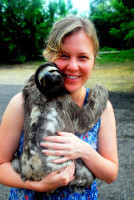

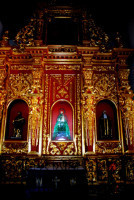
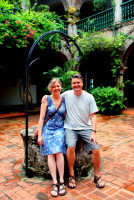
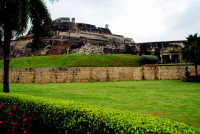
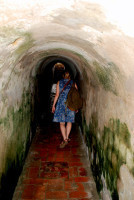
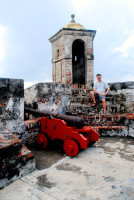
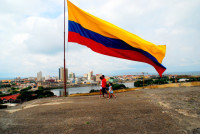
Blog post by Roderick Phillips, author of Weary Heart – a gut-wrenching, heart-wrenching, laugh-wrenching ride.
The post La Popa, Cartagena, Day 174 appeared first on Roderick Phillips.
La Popa, Cartagena, Day 173
For the first time since we arrived in Cartagena the Old Town is suddenly awash with tourists. The reason? A massive cruise liner is in the harbor. And the mothership has disgorged its bizarrely desirable plague of locusts on the town. A feeding frenzy ensues as the wealthy passsengers have only an hour or two to soak up the atmosphere, eat, buy souvenirs, while the locals only have a limited time to fleece the tourists. We want to avoid this plague for several reasons, including the fact that everything now costs twice what it did yesterday and it’s hard to get an authentic experience when you are surrounded by so many gray-haired, lily-white bodies! Unfortunately we appear to be following the same itinerary today. Our first collision is at La Popa, a convent atop a hill to the east of the Old Town called, predictably, Cerro Popa. La Popa offers grand views overlooking Old and New Cartagena. We arrive to an empty parking lot, although there are plenty of hawkers about (this should have been our first sign). Before we even enter the convent Christi is distracted by a hawker and his pet three-toed sloth. Christi is in ecstasy as the docile, friendly mother latches onto her. Christi is in love. After this experience, she wanders around the convent in a daze while I photograph the Miami Beach of Cartagena, Bocagrande. This section of town is where the rich, the famous, and the beautiful live, vacation, and party. Skyscraper after skyscraper sits on a thin spit of land poking out into the Caribbean Sea. It’s at this point that our day begins to deteriorate as six busloads (I counted them) of tourists arrives from the Mothership. In between the writhing mass of tourists, there is actually a pretty flower-filled patio inside the convent, while the chapel hosts images of the beautiful and th grotesque. There is a stunning image of La Virgin de la Candelaria, the patroness of the city, and the Omen-esque statue of Padre Alonso Garcia de Paredas who has a spear sticking out of his chest. The priest was murdered by the indigenous natives for teaching the ways of Catholicism (there’s probably a lesson to be learned from this experience).
Next up on our itinerary (and apparently that of the cruise ship) is the Castillo San Felipe de Barajas. The Spanish regarded Cartagena as their most important possession in the New World. Indeed, most of the treasure that was recovered by the Spanish (more accurately the indigenous natives and imported slaves – think Potosi) left South America from Cartagena. Cartagena was, therefore, a prime target and was attacked on many occasions by pirates and the enemies of Spain, including the sacking perpetrated by the English corsair, Sir Francis Drake in 1586. To help protect its most valuable asset the Spanish fortified the Old Town itself, but also built the citadel known as Castillo San Felipe de Barajas, the largest fortification ever built in the Spanish colonies. The citadel was never breached – at least until today, when it is over-run by tourists.
We can tolerate the tourist hordes for only so long and then we escape back to our quiet little part of the Old Town around San Diego square and the Zebra Cafe where the Cruisers don’t venture – thank god.








Blog post by Roderick Phillips, author of Weary Heart – a gut-wrenching, heart-wrenching, laugh-wrenching ride.
The post La Popa, Cartagena, Day 173 appeared first on Roderick Phillips.
January 17, 2014
Palace of the Inquisition, Cartagena, Day 173
I’m not sure if it is the heat or the six months of gritty traveling that we have already accomplished, but it’s hard to motivate ourselves today. On the other hand perhaps it’s because we’re planning to visit the grisly Palace of the Inquisition (otherwise known as a fantasy camp for would-be torturers around the world). Consequently we are still eating breakfast while the rest of Cartagena is contemplating lunch.
The Cartagena museum of History is located in the Palace of the Inquisition in Plaza de Bolivar. Indeed most of the relics housed in the museum relate to the Inquisition itself. The Punishment Tribunal of the Holy Office (commonly called the Spanish Inquisition) began its crusading activities on this site in 1610, although the Palace itself was not completed until 1776. The purpose of the Inquisition was to identify heretics (non-believers in the Catholic faith). The crimes of the heretics included magic, witchcraft, and blasphemy. The museum has numerous barbaric torture devices on display that were used to obtain confessions. Some of the more gruesome include inserting barbed spikes into a woman’s breasts (which when removed shred the poor woman’s chest), the garrote (where your head is fixed and a steel bolt is pushed against the back of your neck until it breaks), the necklace of spikes (which causes you to bleed to death), and the skull crusher (which forces your brains out through your nose and mouth). Even the rack had a neat twist, stretching out your genitalia as well as your arms and legs. For a supposedly religous organization, the Spanish Inquisition is another grim reminder of the evil that men do. And our guide describes these stories with obvious relish.
We’re happy to escape the ghoulish confines of the museum for the open spaces of Old Town Cartagena. And wherever you wander hereabouts you’re not far from the encircling ramparts that used to protect the city from pirate attacks and wholesale invasions by the colonial powers. Cartagena is actually set against the back drop of the Caribbean sea, although the waterfront here is rather dingy-looking – and definitely nothing like Christi’s movie-inspired image from Romancing the Stone (she was a bit disappointed by that). Even the dungeons that were built into the northeastern fortifications have been converted into souvenir shops – such is the power of the latest invasion of Cartagena: rampant capitalism.
Later we eat dinner at an Argentine-themed parilla around San Diego Square. The restaurant is actually very elegant, but also totally empty apart from ourselves. It’s a little disconcerting eating while the whole staff watches and I think twice before taking a sip of water because I know a waiter will pounce to refill my glass. This is beyond fine dining; it’s almost as if we hired the whole restaurant for an exclusive, romantic evening. Not bad for a couple of backpackers.
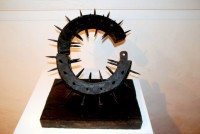
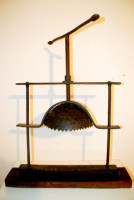
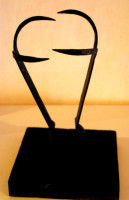



Blog post by Roderick Phillips, author of Weary Heart – a gut wrenching, heart-wrenching, laugh-wrenching tale
The post Palace of the Inquisition, Cartagena, Day 173 appeared first on Roderick Phillips.
January 16, 2014
Old Town Cartagena, Day 172
Christi leads us on a self-guided tour of Old Town Cartagena today. We begin by walking to the Puerta del Reloj and Plaza de los Coches, which is to say the main gate where 11 million slaves arrived over a 300-year period. The slaves were sold in the plaza. There is a statue of Pedro de Heredia in the plaza (the founder of Cartagena in 1533) and beside this benevolent figure there is one of a number of horrible modernist, abstract sculptures that now dot the Old Town – all the work of Sophia Vari (Mrs. Fernando Botero). And the big question is why? The Old Town is in perpetual renovation and our next stop, Plaza de la Aduana, is under scaffolding. Beyond that is Convento and Iglesia de San Pedro Claver. It was an impressive façade and a colorful dome behind. Pedro Claver, a Spanish-born monk, dedicated his life to ministering to the slaves imported from Africa. He was the first person to be canonized in the New World (in 1888). We’ll tour this church another day.
Next up is Plaza de Bolivar, which is a busy, shaded square featuring a statue of the Great Liberator himself, Simon Bolivar. This guy was one busy chap, leading Venezuela, Colombia (including Panama) Ecuador, Peru and Bolivia to independence from the Spanish Empire during his lifetime. He is surrounded by elegant, balconied buildings now mostly museums (Museo del Oro, Palacio de la Inquisition) and the Old Town Cathedral with its dominating tower. The plaza is full of hawkers and I succumb to photographing a Caribbean black woman carrying fruit on her head. The photo is free, but the obligatory purchase of a fruit plate is US$5. And where there’s food there are packs of wild dogs. One approaches Christi, but he turns his nose up at the fruit although he does appear to enjoy his tummy rub.
Nearby is the cathedral, but as the locals are observing mass we don’t hang around. Luckily, the Iglesia de Santo Domingo is open, but it’s completely deserted. An excellent audio guide in English is available, which details not only the history of this the oldest church in the city (built towards the end of the 16th Century) but also the development of the town and the role of Catholicism. Friar Louis Beltran, later a Saint, sanctified the temple. As usual the indigenous population suffered the most during colonialization – either from introduced diseases, loss of land, or war.
We finish our tour back in San Diego Plaza where we enjoy cold drinks and desserts in the shadows of the massive Sofitel hotel (built behind a colonial façade) at the zebra café. Rest and relax a while back in our gloriously air-conditioned room at Casa Quero before enjoying a rather tasty Italian dinner at La Bruschetta off San Diego plaza (chicken for me, pasta for Christi with Tiramisu for dessert). Christi proclaims the meal to be de-licious.
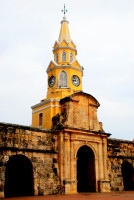

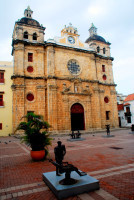
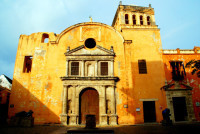
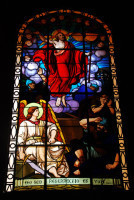

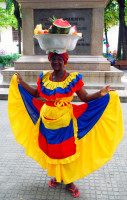

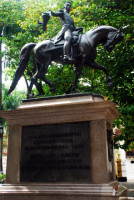
Blog post by Roderick Phillips, author of Weary Heart – a gut-wrenching, heart-wrenching, laugh-wrenching tale.
The post Old Town Cartagena, Day 172 appeared first on Roderick Phillips.
January 15, 2014
San Diego Plaza, Day 171
Ironically, Colombia is one of the easiest countries in South America in which to use US-issued credit cards and the only way Christi and I could guarantee a room for 6 nights in Cartagena during the high season was to pay everything in advance. Only…we don’t really like the hotel we chose, Casa Veranera, although its location near San Diego Plaza is perfect. The voyeuristic aspect of the bathroom is disconcerting to the point of provoking locked bowels, while we alternately freeze and fry in the bedroom depending on the way the wind is blowing. We have no idea whether the management of the Casa Veranera will refund us the money we spent and even if they do, we’re not sure what other accommodation is available. It reminds me rather horribly of our time at Playa El Agua on Margarita Island. Still, I take the bull by the horns…and tell Christi to talk to the owner of the hotel! To their credit, the management of Casa Veranera offer us a full refund (including last night) and apologize for not meeting our standards. Have I mentioned that Colombians are simply the nicest people. Of course, Christi and I now feel terrible, but one backward glance at the transparent toilet has us heading for the exit with our backpacks on our shoulders.
We walk to nearby San Diego Plaza, order drinks and snacks at the Zebra Cafe, and contemplate our options. We make a list of idyllic, but cheap accommodation – it’s a short list – and take to the streets. The hotels are either full or have bumped their prices to ridiculous levels because it’s high season. After an hour of fruitless searching our last hope is Casa Quero, which is located…right next door to Casa Veranera! Christi immediately falls in love with the frills, the privacy, the pet toucan (Poco), and the doors! In addition to the lavish refund we received from Casa Veranera and Christi’s ability to sell some family jewels on e-bay at short notice, we negotiate a remarkable rate. It still blows the budget out of the water, but we choose to live in denial. Our room at Casa Quero comes with a massive king-sized bed, reassuringly solid-looking doors, and decor that is elegant, simple, and colonial. The hotel is generally gorgeous with lots of nooks, hammocks, and sofas in which to relax. The rooftop pool has views over the historic center of Cartagena and best of all there appears to be no other guests.
We spend the afternoon wandering around the historic center of Old Town Cartagena. It’s actually much smaller than I had imagined and more touristy than the rest of Colombia. Hawkers try to sell hats, sunglasses, paintings and prints, but quickly move on to other targets when we say no. Unlike Cusco, for example, the hawkers in Cartagena give up easily! We wander aimlessly, peeking into churches, squares, and alleyways. At night the squares are lit up and people come out to play, eat, and drink. It’s carnival time now that the heat has dissipated. We find our way back to San Diego Plaza and hang out there for the evening snacking on street food.
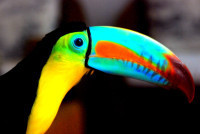
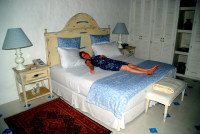

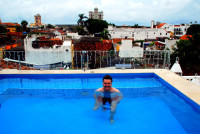
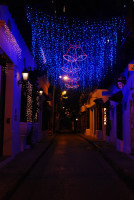
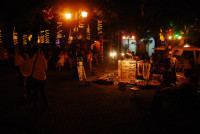

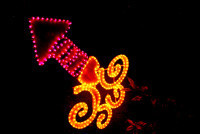
Blog post by Roderick Phillips, author of Weary Heart, a gut-wrenching, heart-wrenching, laugh-wrenching story.
The post San Diego Plaza, Day 171 appeared first on Roderick Phillips.

